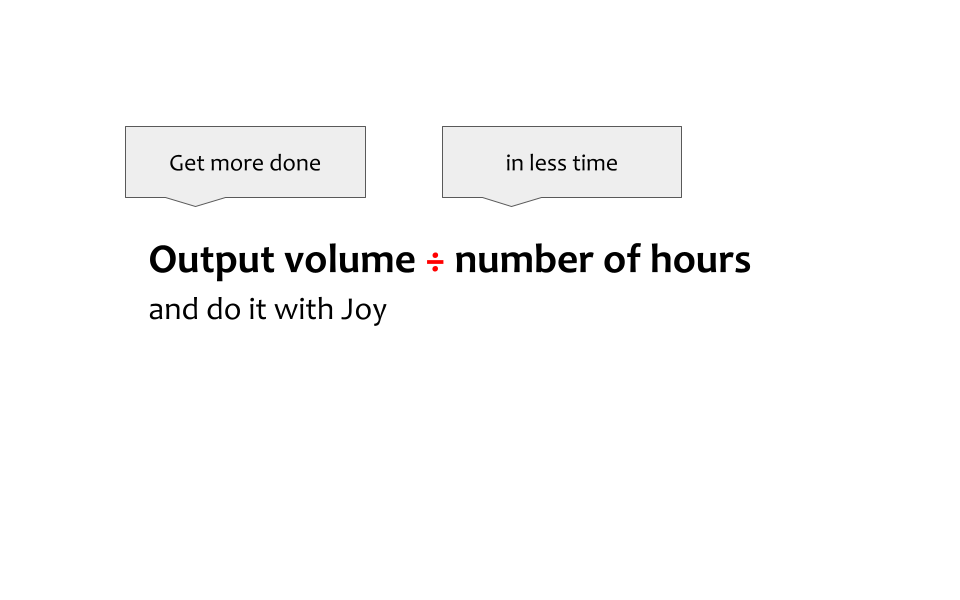In part 1, I made the bold statement that the number one job of a leader is productivity. Let’s continue with a general definition of productivity. Following this, we’ll delve into defining productivity in relation to your organization or specific jobs.
One metric views productivity as the ratio between output volume and inputs. Simply put, it’s about the output a person or process generates divided by the number of hours worked. Being productive means achieving high volumes of output within a set number of hours.
Richard Polak, in his book ‘Work Smarter Now’, defines productivity as ‘accomplishing more in less time, with enthusiasm.’ From a philosophical standpoint, improving productivity can be achieved by focusing on tasks only you can do.
Therefore, with Polak’s definition in mind, you should focus on helping others identify their priorities, enabling them to focus their efforts on tasks only they can do, and supporting them to do it with joy.

The Course
WEEK 1 – IMPROVING PRODUCTIVITY AND EFFICIENCY (120 minutes)
- What does productivity mean?
- The productivity buckets
- Approachable leadership: Your open-door policy
- Developing people: Four tools that support employee agency in improving productivity and efficiency
WEEK 2 – DEADLINES AND TASK FOCUS (90 minutes)
- What does productivity mean?
- The productivity buckets
- Approachable leadership: Your open-door policy
- Developing people: Four tools that support employee agency in improving productivity and efficiency
WEEK 3 – MOVING WITH A SENSE OF URGENCY (60 minutes)
- Supporting best practice: Giving and receiving feedback
- Developing keystone habits to amplify important and time-sensitive tasks
- Scenario: Putting it all together